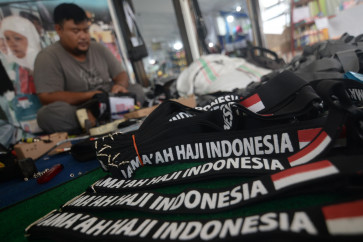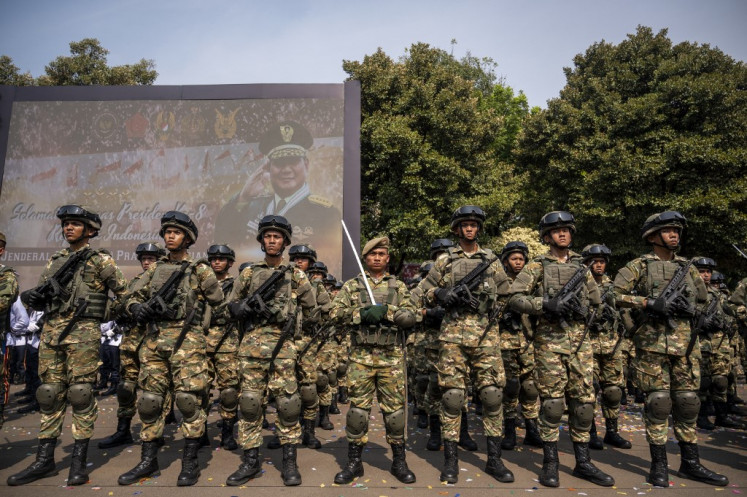China, the survivor
A resilient state has evolved for centuries to find its way to prosper
Change text size
Gift Premium Articles
to Anyone

A
/span>A resilient state has evolved for centuries to find its way to prosper.
China has always been in between. While the nation offers proof that it has the iron-fisted discipline needed to improve its economy, it also offers testimony of a compromise to Western capitalism that has helped it to triumph in trade.
While suppressing the freedom of speech of its citizens, the Chinese government has successfully created a workforce with a Spartan ethos that has rewarded the nation with unprecedented economic growth rates in human history.
This year is a defining moment for how China can continue down the path of economic growth. After China’s economy slowed in 2008 due to the fall of the global powers that have propelled its fortunes, the nation has been scaling down its openness to foreign investment while empowering its domestic market as another source of prosperity.
This is no easy task, given the widening income gaps across its regions as the result of the imbalanced pace of industrialization during its rise.
The income gap and violations of human rights have been major global criticisms of the Chinese government and growing source of internal discontent with the ruling regime, the Communist Party of China (CPC).
Along with the changing way of economic reform China has focused on exerting its military influence on its Asian neighbors. It has been involved in territorial disputes with Philippines, Vietnam, Malaysia and Brunei in the South China Sea. China has also come face to face with long-time nemesis Japan, competing over an island in the East China Sea that the Chinese calls the Diaoyu and the Japanese call the Senkaku.
Such intrusive acts have put the world on alert. Will China grow like existing global powers, which have risen to prominence using economic, technological and military muscle? Or will it continue to rule in trade while looking inward to focus on its citizens’ welfare?
International historian Odd Arne Westad from London School of Economics argues in his latest book, Restless Empire: China and the World since 1750, that China may defend its peaceful path to become a global power.
Tracing the country’s history from the twilight of the imperial era under the Qing dynasty, the Norwegian has made an empathetic case that China is an adaptive society that can change itself to suit the signs of times and international pressure.
At the peak of its power in the 18th century, the Qing had conquered all the smaller nations on its northern frontier, incorporating them into larger China. It established three different focuses for foreign affairs: Central Asia, where the theme was expansion; coastal Asia, where the theme was trade and tribute; and Russia, where the theme was diplomacy.
A less-aggressive approach to Russia and the West paralleled the empire’s caution when dealing with other nations that were virtually unknown to the empire. Unlike the Mongol empire, which expanded by force to as far west as Poland; the Qing were complacent, with their trade centered on Asia and Russia.
When the Qing opened China to foreign trade in the middle of the century, the dynasty awkwardly and slowly embraced international pacts proffered by the British and Russia. The Qing were promoting internal seaborne trade under their self-established “Canton system”, which allowed foreign ships to stop in Guangzhou (Canton) during several months of the year.
The system was soon challenged by the British East India Company (EIC), which sought more flexibility in opium trade in the empire. Resistance from the Qing later triggered the Opium War in 1839, marking the first loss of the dynasty in war and the start of a century of forced openness to foreign powers.
Losing to several countries, including to Japan, diminished the Qing’s authority in the eyes of its citizens. Plagued by wars and rebellions, the empire was finally disintegrated in 1911.
Starting as a weak republic, China relied on its vast territory and the presence of foreign powers to sustain its existence.
Japan, which at that time had emerged as the new superpower of Asia, saw China as a shield against foreign occupation, while Western powers saw that the new republic had to be sustained for business reasons, feeling that its abolition would cause greater unrest to the region.
Openness resulted in the widespread presence of foreigners in the country. In 1917, there were 92 Chinese cities and towns open to direct foreign trade, half of which had concessions and settlements where foreigners had the right to reside, trade and own property.
They were led by foreign local administrations, not by the Chinese government.
The highly unequal distribution of rights — between the Chinese and the foreigners — along with concentrated development in the foreign-led areas, scarred the Chinese and prompted rise of the Communists and the closure of the nation from abroad.
The book is a well-written account of the rise of modern China. The author dexterously accentuates the important milestones in the complicated history of the republic.
Westad points out that what is most remarkable is that China’s borders today are almost identical to those of the Qing empire even after the waning years.
“It is a testimony to the significance of the idea of one integrated state, even when the republic was at its weakest,” he elaborates in the book’s second chapter, titled “Republic”.
It, however, remains a question whether present-day China can refrain from using force to achieve regional and global supremacy.
Most Chinese today, including the members of the CPC, identify themselves as of Han extraction, instead of the Manchu who formed the Qing Dynasty.
The openness of China today started in 1978 under Deng Xiaoping, whose economic reform maxim, “reform and opening up”, has been the foundation of the nation’s growth.
Where the country is heading, which also will determine the legitimacy of the ruling party, depends on the growth path and foreign policy approach chosen by the party leadership, which should avoid the Qing’s clumsiness in engaging with the West.
In a recent visit to Shenzhen, the apparent heir to the republic’s presidency, CPC general-secretary Xi Jinping, has vowed to be faithful to Deng’s way.
“No stop in reform and no stop in opening up,” he said as quoted by Xinhua. He made a stop to the statue of Deng in Liahuashan Park and laid a bouquet of flowers in front of it.
In his visit to the US earlier this year, Xi talked to President Barack Obama and visited the Pentagon. He ate chocolate bars and watched NBA games, expressing an interest in American culture.
Let’s hope that he will be as friendly when he is sworn in March.
Restless Empire: China and the World since 1750
Odd Arne Westad
Basic Books, 2012
528 pages









